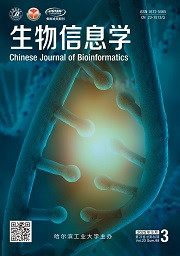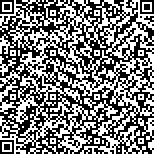| 引用本文: | 梁家浩,赵中民,王海.基于生物信息学构建支气管哮喘上皮—间质转化风险模型及其治疗中药预测[J].生物信息学,2025,23(3):210-227. |
| LIANG Jiahao,ZHAO Zhongmin,WANG Hai.Constructing a risk model of EMT in bronchial asthma and predictingthe targeted Chinese medicine based on bioinformatics[J].Chinese Journal of Bioinformatics,2025,23(3):210-227. |
|
| 摘要: |
| 为构建列线图风险模型以确定支气管哮喘上皮-间质转化的潜在生物标志物,并预测其靶向中药。从GEO数据库下载包含172例哮喘患者和36名健康对照者痰液细胞样本的数据集GSE76262和GSE137268,其中GSE76262用作实验数据集,GSE137268作为独立验证数据集。通过limma R软件包筛选哮喘患者和健康对照者样本的差异表达基因(DEGs),将其与EMT相关基因取交集得到哮喘EMT相关DEGs,并进行功能注释和富集分析。利用Lasso回归分析筛选出核心生物标志物,同时构建列线图预测模型,并通过校准曲线、决策曲线和受试者工作特征曲线评估其诊断效能。利用CIBERSORT探讨哮喘的免疫浸润特性,并进一步分析核心生物标志物与不同免疫细胞之间的相关性。最后,在Coremine Medical数据库预测核心生物标志物靶向中药。共筛选出40个哮喘EMT相关DEGs,其中25个基因上调,15个基因下调。功能富集分析显示,这些DEGs主要参与细胞因子活性、细胞因子介导的信号通路、脂质和动脉硬化、肺纤维化等。CCL22和FKBP5被鉴定为哮喘EMT的核心生物标志物,且其诊断价值有显著意义。CIBERSORT免疫浸润分析显示,哮喘患者和健康对照者样本的免疫浸润特征存在显著差异。在哮喘组样本发现高水平的静息树突状细胞、活化树突状细胞、活化肥大细胞和嗜酸性粒细胞;而在健康对照组发现高水平的初始B细胞、CD8+T细胞、滤泡辅助性T细胞、M0巨噬细胞和M2巨噬细胞。在Coremine Medical数据库预测到小构树皮等48味靶向中药。预测哮喘EMT发生的列线图风险模型具有重要临床意义;CCL22和FKBP5可能是哮喘EMT的关键诊断生物标志物;小构树皮等48味中药可能通过作用于CCL22和FKBP5来干预气道重塑,发挥对哮喘的治疗作用。 |
| 关键词: 哮喘 生物信息学 列线图风险模型 免疫浸润 特征基因 靶向中药 |
| DOI:10.12113/202308003 |
| 分类号:R965.1 |
| 文献标识码:A |
| 基金项目:黑龙江中医药大学新药研究基金资助项目(No.2019XY05). |
|
| Constructing a risk model of EMT in bronchial asthma and predictingthe targeted Chinese medicine based on bioinformatics |
|
LIANG Jiahao, ZHAO Zhongmin, WANG Hai
|
|
(Heilongjiang University of Chinese Medicine, Harbin 150040, China)
|
| Abstract: |
| To construct a nomogram risk model to identify potential biomarkers of epithelial-mesenchymal transition (EMT) in bronchial asthma and predict their targeted traditional Chinese medicine. Two datasets, GSE76262 and GSE137268, including sputum cell samples from 172 asthma patients and 36 healthy controls, are downloaded from the GEO database. GSE76262 is used as the experimental dataset and GSE137268 is used as the independent validation dataset. The differentially expressed genes (DEGs) of samples from asthma patients and healthy controls are screened by limma R software package, and the intersection of these genes and EMT-related genes are obtained as asthma EMT-related DEGs, and functional annotation and enrichment analysis are performed. Lasso regression analysis is used to screen out the core biomarkers, and a nomogram prediction model is constructed. The diagnostic performance is evaluated by calibration curve, decision curve and receiver operating characteristic curve. CIBERSORT is used to explore the characteristics of immune infiltration in asthma, and the correlation between core biomarkers and different immune cells is further analyzed. Finally, core biomarkers targeted traditional Chinese medicine are predicted in the Coremine Medical database. A total of 40 asthma EMT-related DEGs are screened, of which 25 genes are up-regulated and 15 genes are down-regulated. Functional enrichment analysis shows that these DEGs are mainly involved in cytokine activity, cytokine-mediated signaling pathways, lipid and atherosclerosis, pulmonary fibrosis, etc. CCL22 and FKBP5 are identified as the core biomarkers of asthma EMT, and their diagnostic value is significant. CIBERSORT immune infiltration analysis shows significant differences in immune infiltration characteristics between samples from asthma patients and healthy controls. High levels of resting DCS, activated DCS, activated mast cells and eosinophils are found in the asthma group samples. However, high levels of naive B cells, CD8+T cells, follicular helper T cells, M0 macrophages, and M2 macrophages are found in healthy controls. In Coremine Medical database, 48 targeted traditional Chinese medicine, such as broussonetia kazinoki bark, are predicted. The nomogram risk model for predicting EMT of asthma has important clinical significance. CCL22 and FKBP5 may be the key diagnostic biomarkers of EMT in asthma. The 48 traditional Chinese medicine (TCM) such as broussonetia kazinoki bark may intervene in airway remodeling by acting on CCL22 and FKBP5, and play a therapeutic role in asthma. |
| Key words: Asthma Bioinformatics Nomogram risk model Immune infiltration Core genes Targeted Chinese medicine |






